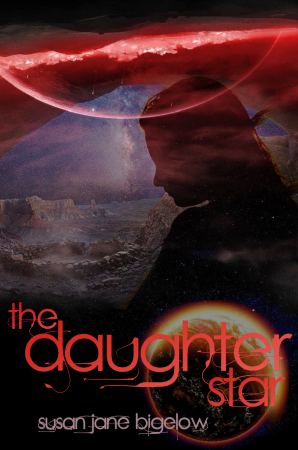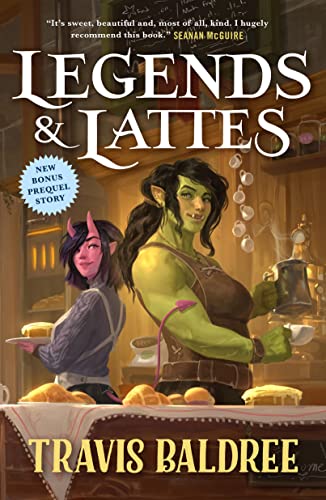The Daughter Star / Susan Jane Bigelow
Candlemark and Gleam, release date May 28 2013 (e-ARC)
What a rotten way for everything to turn out. Freighter pilot Marta Grayline is grounded, trapped on her miserable home planet by an intrasystem war that’s separated her from her beautiful girlfriend, her career, and everything she loves.
When her sister Beth offers her a way out by enlisting in the Novan Emergency Fleet, Marta jumps at the opportunity to get back into space.
But when her ship is attacked and destroyed, she finds herself stranded on a mysterious space station with a crew that won’t answer her questions.
And, of course, then there’s the aliens – the planet-destroying Abrax that somehow seem to have a hold on Beth.
They’re coming for Marta, too.
She’ll have to face ancient forces, her own doubts, and the inside of an alien mind if she wants to get some answers, complete her mission, and unlock her own latent potential. The Daughter Star, the red beacon in the night sky, may yet be the key to the freedom and understanding Marta so desperately wants.
I jumped on The Daughter Star as soon as its galley showed up in my inbox (thank you, Danika and Candlemark and Gleam!) because Bigelow’s Extrahuman series has been on my TBR pile for months. After finishing this novel, everything else by the author has just moved up a few hundred notches, because The Daughter Star is one of the richest, most thought provoking SF novels I’ve read this year. Or last year. I haven’t actually felt this excited about aliens as a genre or construct since discovering (only a few decades late) Octavia Butler and Lilith’s Brood a couple of years ago.
Imagine that you have to leave Earth. That votes have taken place. That debates have gone on for over a year and that you, along with everyone else, have directed to a window that, you are told, opens out onto another planet. You have no choice. You—or your government—have already voted. One window–you don’t know which—will bring you to beautiful, peaceful Ad Astra. The other—and this is where you suspect you’re going, as you are neither rich nor influential, brings you to Nea. Nea. Where the gravity bites and all the plants want to kill you. Imagine the tensions that would exist between these two planets. New countries form. Bodies must change to suit new atmosphere, new gravity. Languages evolve. And, over the years, imagine asking why. Why these two planets? Why one Elysium to the other’s hell?
Now imagine that you’re long settled on Nea. Inhospitable country has led to strict borders and local governments, including one particular puritanical outpost on a rain drenched peninsula where you are, as a good young girl, expected to marry and produce enough offspring to flood the rest of your forsaken planet with the right sort of people. The aliens—the Abrax—are long gone. Earth is dead. You are frustrated, stifled, and the only gay in the village. You get out. You leave your sisters and parents and find a way out your country, off your planet. You join an interstellar trade fleet and do not particularly care about the inherent inequalities between planets, just so long as you can get off your own. You meet a beautiful woman. You can see the stars.
You are Marta Grayline, and you are going to have obscene, glorious amounts of character development before is done.
Marta moves from the rather flippant, naive, infuriating girl conjured up by The Star Daughter’s blurb into a questioning, determined, and often powerful woman by the time you see the last of her. I won’t spoil the plot—I can’t, it would go on too long. But watching Marta navigate her way through personal space, as well as the real kind, is a beautiful thing. Her relationships—with her siblings, with her planet, with co-workers and Abrax and the woman she is sure is the love of her life—are all so well drawn that I would forgive Bigelow if plot took a back seat. And it never does. I’m still left breathless by that. Every time I thought I had The Daughter Star figured out—and there were three distinct points where I was sure that I knew where this book was going—I, like poor Marta, was thrown something else. And does the twisting plot, character development, and the novel’s Serious Social Questions make for dull, worthy reading?
Like hell. The Daughter Star is often laugh out loud funny. Novans, as you might expect, have developed whole new avenues in gallows humour. Marta’s complete adoration for a girlfriend she barely ever gets to see—the way she can twist a memory to suit her longing–will touch many readers. Her relationship with Beth—the youngest and least known of her siblings, is also stunning. It was almost unfair that The Daughter Star had an ending to match of the rest of it: self contained enough for satisfaction, but still leading strongly to the other stories Marta has to tell.
Enough of this. Go read.




Alicja says
That books sounds amazing but I can’t seem to find it on amazon. Do you know where we can get it?
Danika @ The Lesbrary says
It comes out May 28th, so it should be on Amazon by then!
Kit Ryan (@limpinglibrary) says
You can also pre-order through the author’s website, I believe.
Alicja says
Thank you!